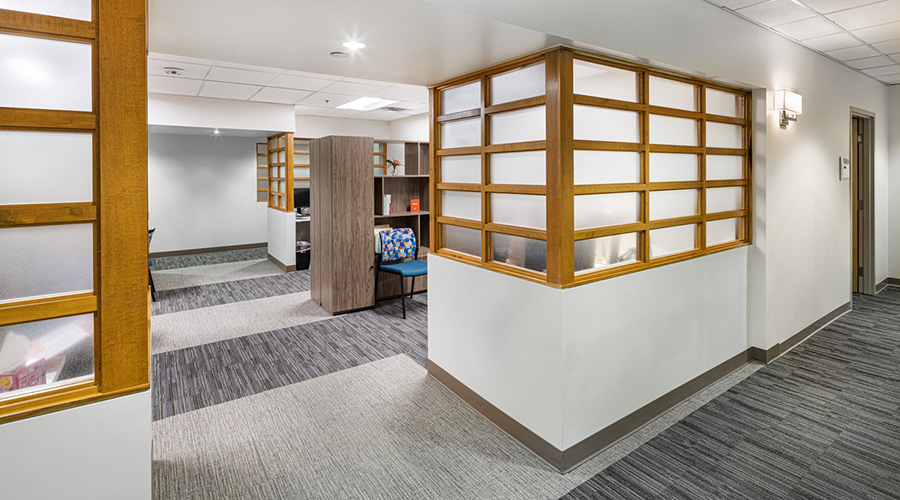Healthcare providers are converting underutilized spaces into behavioral facilities to meet demand and generate revenue, according to an article on the Medical Construction & Design website. These renovations take various forms.
For instance, team workstations can be converted to suit behavioral health standards. Work areas are designed as a large, multi-seat workspace, and are sometimes glass-enclosed for heads-down, focused work and team collaboration and planning.
Also, behavioral unit entry/exit points should be through a series of interlocking doors to prevent elopement, adding complexity to renovations of existing spaces.
Standard multi-functional patient beds with electrical components, over-bed lights, medical gas headwalls, TVs and wall-mounted devices pose safety risks in a behavioral setting.

 Code Compliance Isn't Enough for Healthcare Resilience
Code Compliance Isn't Enough for Healthcare Resilience Ribbon Cutting Marks First Phase Completion for New Montefiore Einstein Facility
Ribbon Cutting Marks First Phase Completion for New Montefiore Einstein Facility Brooks Rehabilitation Launches 3 New Major Construction Projects
Brooks Rehabilitation Launches 3 New Major Construction Projects Joint Commission Standards: What Updates Matter Most?
Joint Commission Standards: What Updates Matter Most? Swinerton Completes Construction at Atlanta's Grady Hospital
Swinerton Completes Construction at Atlanta's Grady Hospital